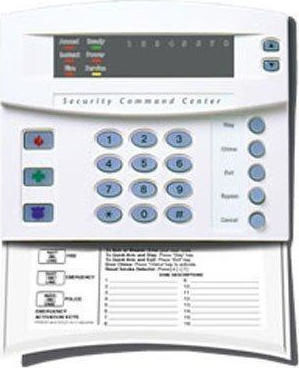
Step 2 – Set keypad options (For LCD Keypads) The keypad will automatically exit the keypad programming after this You will now enter the partition you want the keypad to be assigned to.The Instant LED will illuminate steady and the Service LED will remain flashing The Service LED and the Instant LED will flash on the keypad that you are working on Step 1 – Assign keypad number and partition You will then be asked to enter location.Total Connect 2.0 Package Monitoring Add-Ons.Central Station Alarm Monitoring Services.If not, I will begin by connecting a scope to the alarm panel keypad pins and will check out what comes down the line and take it from there. Ideally, I'd like to use GPIO pins, rather than a USB to RS232 convertor, to listen to the comms.īefore I begin, I was wondering if anyone has done this.

Although comms to the keypad is 2-way, all I'm interested in (for now) is what the alarm board sends to the keypad when any zone (reed switches, PIR, etc.) opens or closes.


It has a 2 wire connection to the alarm panel, which I assume is RS232. (It would also email me under certain conditions.) What I need to know is how to eavesdrop on the keypad controller. On top of that, I use TightVNC to control the Pi, so it sits in the same cupboard as my home alarm, without a keyboard, mouse or screen.)įor my next project, I'd like to monitor my home alarm system, a Caddx NX-8, using a web site I will write. (I also use crontab to control the lights at specific times. The site is encrypted with SSL and requires a log in, so I'm confidant enough to make some more web sites to handle home security. Following various directions I've found on the forums, I've installed Apache, OpenSSL, Mochad (to control X10 switches via USB to an X10 controller), and wrote a web site that lets me turn lights on and off. Despite being a noob, I have succeeded in turning my Pi into an X10 Web based home controller.


 0 kommentar(er)
0 kommentar(er)
